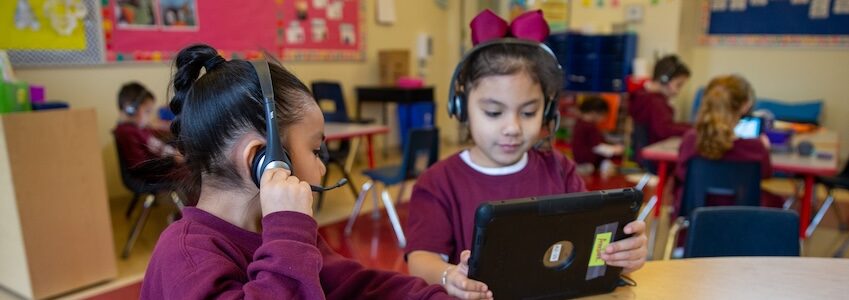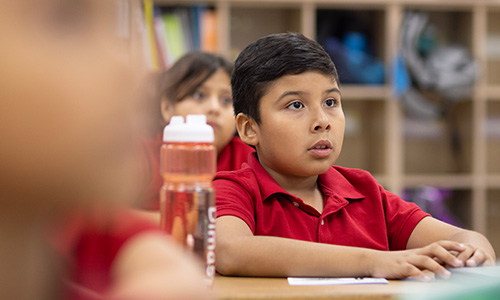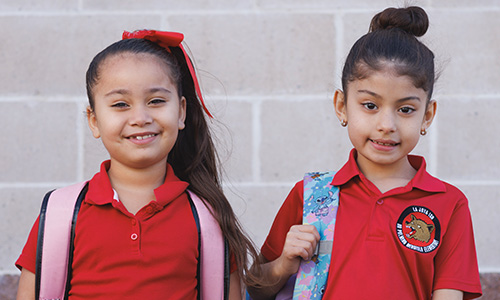
One of my friends, a science and drama teacher, was recently surprised by the news that she would also be teaching coding this school year. Sound familiar? It’s one of our collective educator nightmares. But, as I was watching the webinar Maximizing the early literacy block: Help your teachers with evidence-based strategies, I realized that if I were given a new literacy block on Friday, I honestly wouldn’t be lost on Monday. That’s because the webinar was genuine professional development, chock-full of resources and explanations of the science of reading. It had tangible teacher tips from Heather Cella, director of Early Learning Solutions Strategy at NWEA, and Tiffany Peltier, who (among other things) serves on the scientific editorial board of The Reading League Journal. Okay, credentials, we see you!
Listen up, literacy coaches, reading teachers, and any education leaders ready to level-up the early literacy block: you need to watch this webinar. In less than an hour, you will walk away with real strategies for core, small-group, and independent instruction. Need an overview first? Let’s hit the highlights.
Introduction: Let’s be clear and simple
Tiffany opens the webinar by reminding participants that our goal at NWEA is to translate our robust, ongoing research into effective classroom practices. What good is it if we have all the data but don’t do the work of helping teachers use it to improve their teaching? Teachers know that early readers are still lagging behind pre-COVID levels, but instead of looking to the past, their question is “What do I do tomorrow?”
To answer that question, our team starts with a science-aligned approach, backed by evidence of what works when it comes to learning to read. NWEA believes that successful literacy teaching cascades from the simple view of reading, and Heather and Tiffany don’t skip over this. The simple view of reading is a model used to concisely explain how reading comprehension is acquired. It states that two components, when multiplied together, lead to what we typically consider “successful” reading, or reading comprehension (RC). Those two factors are decoding (D) and language comprehension (LC).
Decoding (D) is the act of seeing symbols and recognizing their associated sound, and it comprises what we typically teach as phonics. We scaffold this process individually with students, as this unfolds at a unique pace for each kid. Language comprehension (LC) is where vocabulary, semantics, content knowledge, and language usage come together, and it underscores the need for all students—regardless of decoding readiness—to be exposed to rigorous, on-grade-level texts full of rich ideas and construction.
“When I was a teacher, I didn’t recognize how essential learning morphemes can be for students,” Tiffany admits. So many of us didn’t benefit from the science of reading in our own teacher training! We now understand that strong literacy curriculum must be supported by this science-aligned understanding. NWEA hosted another webinar last year, The science of reading for leaders: Helping your teachers shift instructional practice, that covers this topic more deeply.
Teacher resources, strategies, and new things to try
Tiffany offers true professional development in this section of the webinar on the early literacy block, frequently inviting participants to try alongside her as she demonstrates new literacy strategies to use during whole-group instruction and showcasing several NWEA lesson plan templates that are ready to download.
To maximize core group instruction, try implementing:
- Our printable suite of embedded mnemonics, explaining the science behind this scaffolded system and how teachers can put it to use tomorrow
- Spelling and word-chaining; Tiffany models multiple classroom-ready examples that would additionally bolster small-group instruction
- Advanced word recognition lesson planning tools to support multisyllabic words as your curriculum becomes more advanced
To take advantage of these resources, download the webinar literacy assets.
Using data (quickly!) to make successful small groups and differentiate
How can we help teachers more quickly turn assessment data into immediate classroom changes?
“As administrators, we know that using strong data is key,” Heather says as she introduces quick techniques for leaders and teachers to use with MAP® Reading Fluency™, which reports out on individual student’s progress in oral reading fluency, phonics and word recognition, and phonological awareness. This information is critical when planning an early literacy block.
What about teachers’ choices as they organize small groups? With example data on screen, Heather walks through using easily sortable reports to inform dynamic groupings and individual supports. As the groupings generate automatic, color-coded lists, teachers’ time is cut in half as they head into instructional planning.
As teachers develop their groups, then they can turn toward differentiation. “My teaching moves are going to change depending on where the student is in their learning,” Tiffany explains. She provides examples of supporting letter and sound acquisition through instructional hierarchy phases:
- Acquisition: The student is developing both accuracy and fluency. The teacher, therefore, models, blocks practice, gives detailed feedback, and provides consistent reinforcement.
- Fluency: The student’s accuracy is high, but fluency is low. The teacher, therefore, delays feedback, spaces out practice, and supports opportunities for repeated interaction.
- Generalization: The student’s accuracy and fluency are high. The teacher, therefore, scales back the scaffolds, adjusts practice levels, modulates feedback, and provides opportunities for independence.
As MAP Reading Fluency breaks down these details and parses them into digestible bits of data, teachers can pivot to individualized instruction. Heather and Tiffany show together what Student A’s data indicates, versus Student B’s—and what action to take in either case.
“There are two very different needs as shown by screening data,” Tiffany says. “If we don’t know how to read them or don’t know what they mean, I might be giving all students oral reading instruction, and those phonics gaps are going to continue to grow! We need to make sure, are we providing correct instruction for each student’s needs?”
Independent learning with coach
Teachers simply can’t be everywhere at once! We need assistance with our early literacy block and with providing those research-proven, in-the-moment microinterventions for our students who are ready to read independently but still need a few guardrails. Our students need a solution as unique as they are, driven by their data and constantly adjusted to their new growth.
When students take MAP Reading Fluency, each student receives a report on:
- Foundational skills: Phonological awareness, phonics and word recognition, and language comprehension
- Oral reading data: Oral reading fluency and reading comprehension
- Possible learning disabilities: Our universal screener flags potential reading barriers like dyslexia
MAP Reading Fluency also places individual students in learning pathways with Maya, our AI-powered virtual coach who provides one-on-one reading practice that targets areas of support based on a student’s latest scores. Maya provides those microinterventions based on the science of reading in English and Spanish. You can see how Maya works around minute 45 of the webinar.
Carry the learning forward
Part of transformative professional development—whether in-person or virtual, live or asynchronous—are simulation activities, empathy-building, and learner activation. In the webinar, Tiffany and Heather build teacher understanding and empathy of what a reader may feel as they learn. And that’s what’s truly important: deeply identifying with our learners. Only then can we meaningfully help them grow their love of reading.
Ready to continue maximizing your early literacy block? Watch the webinar, and keep the fun going by:
- Watching Tiffany’s video on supporting early readers
- Reading Heather’s article about MAP Reading Fluency with coach
- Viewing our video on MAP Reading Fluency with coach
- Exploring professional learning on the science of reading







